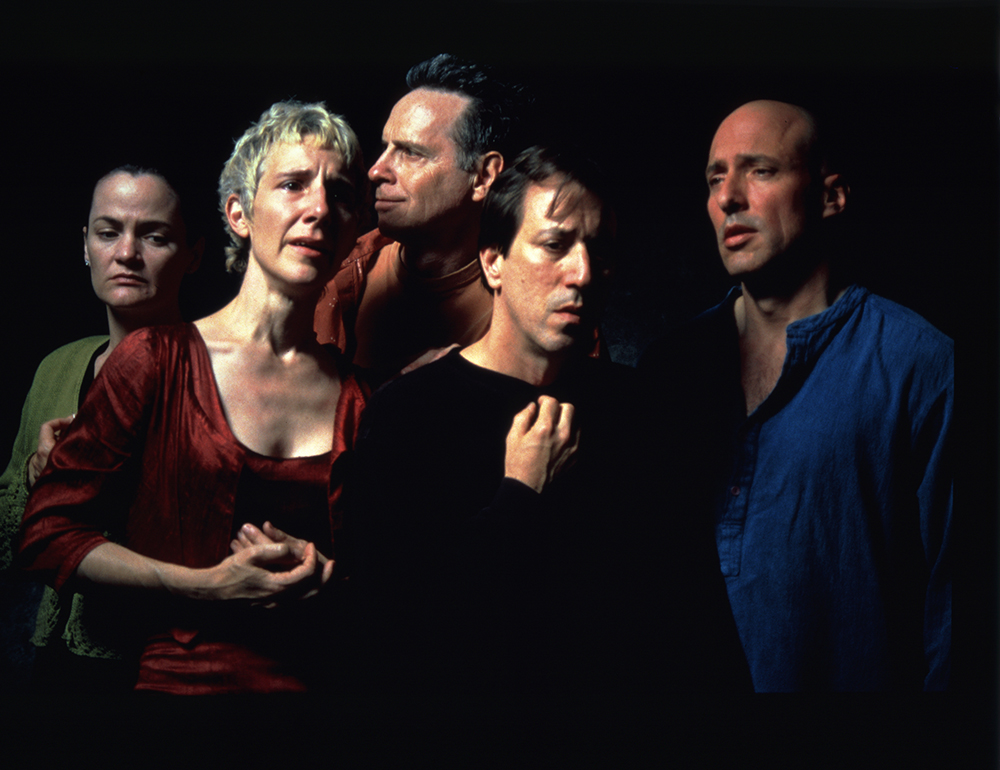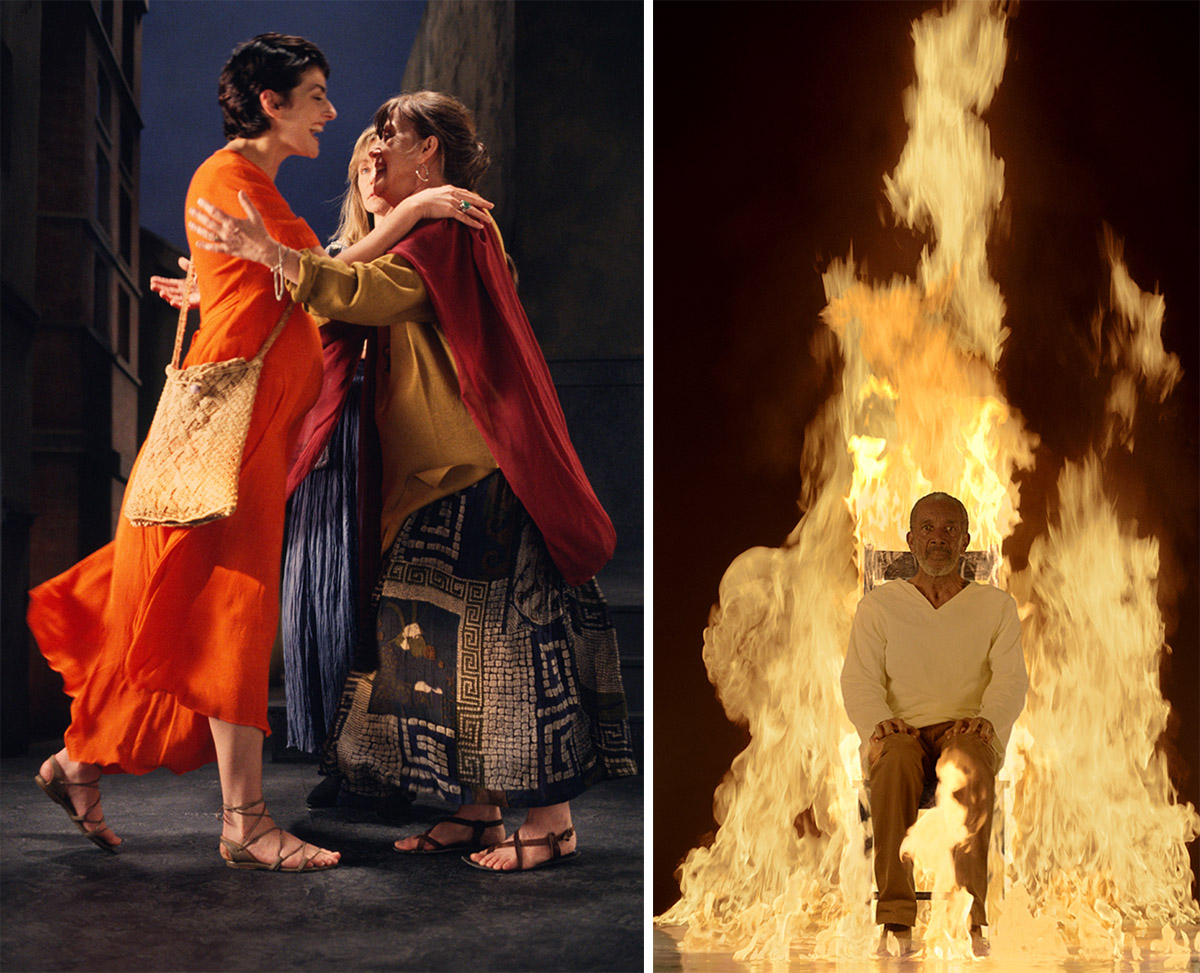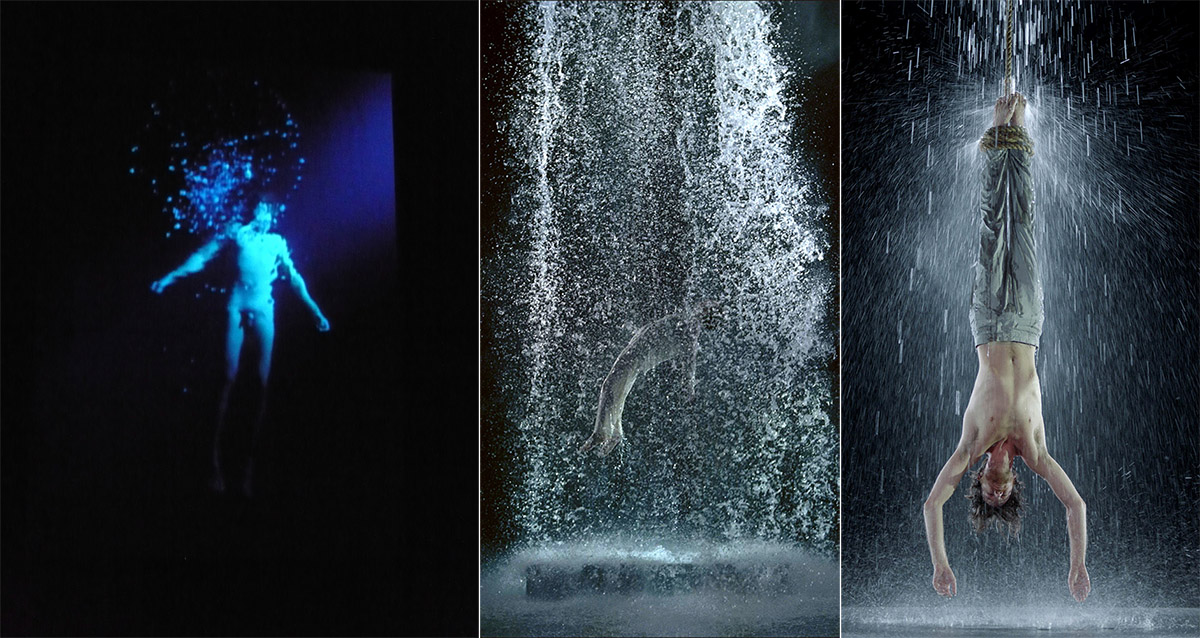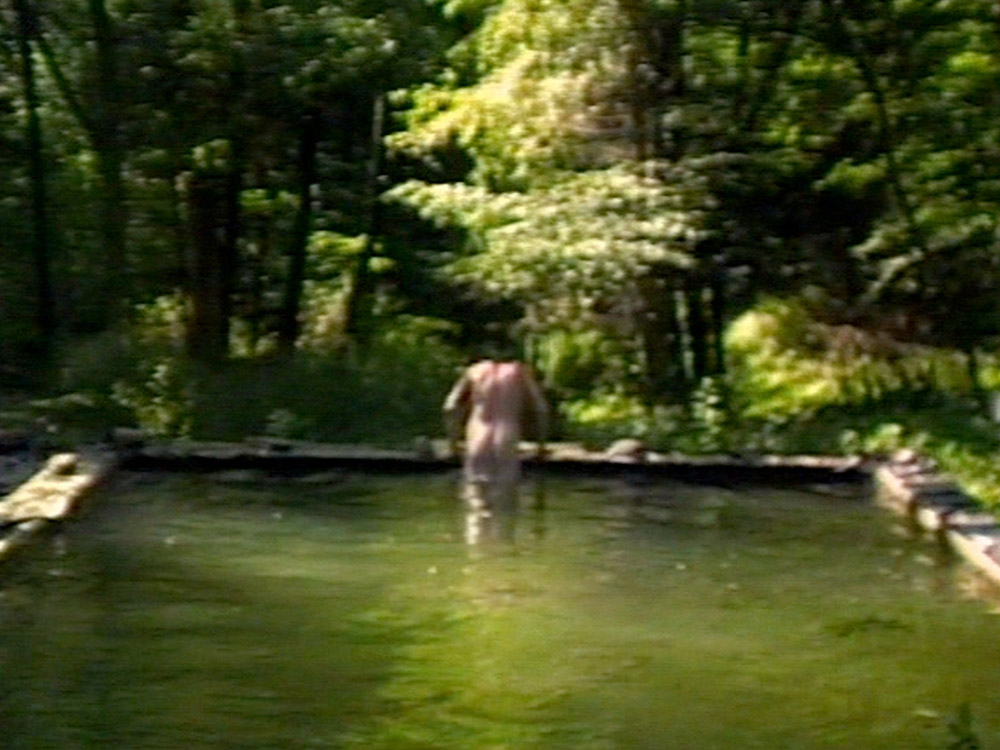ART-PRESENTATION: Bill Viola-Vía Mística
 Bill Viola began to experiment with video art in the early ‘70s through his participation in the Experimental Studios program at Syracuse University in New York directed by Jack Nelson. In Syracuse he met the curator of Video Art David Ross and assisted artist Peter Campus and Nam June Paik at the Everson Museum of Art. With his interest in Eastern and Western mysticism, philosophies and poetry, Viola used the technical potential of video as a tool for a lifelong inquiry into the human condition, including birth and death, and the processes of change, rebirth, and transformation, all of which are prominent themes in his work.
Bill Viola began to experiment with video art in the early ‘70s through his participation in the Experimental Studios program at Syracuse University in New York directed by Jack Nelson. In Syracuse he met the curator of Video Art David Ross and assisted artist Peter Campus and Nam June Paik at the Everson Museum of Art. With his interest in Eastern and Western mysticism, philosophies and poetry, Viola used the technical potential of video as a tool for a lifelong inquiry into the human condition, including birth and death, and the processes of change, rebirth, and transformation, all of which are prominent themes in his work.
By Dimitris Lempesis
Photo: Museo de Arte Abstracto Español Archive
Bill Viola in his solo exhibition “Vía Mística” distributes sixteen works with a marked spiritual character, in four locations in the historic center of Cuenca in Spain. In addition to the Museum of Spanish Abstract Art, the churches of San Miguel, San Andrés y Las Angélicas and an exhibition hall of the José María Cruz Novillo School of Art. Viola creates, in his words, “Total environments” that surround the viewer with image and sound. Rock art, Rothko’s painting and the spiritual and mystical texts of the Eastern and Western tradition are some of his sources of inspiration. In “The Reflecting Pool” Viola began to explore some of the themes that he would continue to develop throughout his entire career. The video begins with the scene of a man, the artist in this case, emerging from the forest and stopping at the edge of a pool. The man suddenly jumps into the pool while crying out, and time is suspended at that very moment. His image remains frozen while the rest of the scene unfolds naturally. The man stays floating in the air in a fetal position and does not fall into the water; the sound of the water cannot be heard. In reality, the man does not fall; he remains suspended in the air, where he remains through most of the video. However, the pool does not remain indifferent; it reacts by generating ripples in the water as if he had fallen into it. This contrast sparks tension between the halted motion and the ongoing motion, between the man suspended as if in a static photograph and the motion of the water, which shows the continuation of the video, which shifts to the dichotomy between the man and nature and between the visible world and the intangible world. The video was extremely complex to produce at the time it was filmed. Viola had to use a fixed camera and take several shots fading into one another in order to achieve the image transition that he wanted. In this way, he managed to generate a video that is extraordinarily complex for the viewer’s perception. “The Greeting” consists of a sequence of video images projected onto a screen mounted on the wall in a dark room. It shows two women engrossed in conversation. Behind them we can glimpse industrial buildings lined up in a strange perspective over a drab urban background. As the two women are speaking, a third one appears, interrupts them, and comes up to them. When they turn to greet her, it is obvious that one of the women knows her very well, while the other knows her less or perhaps not at all. A slight breeze begins to blow and causes a subtle change in the lighting when the third woman comes and greets the woman she knows while ignoring the other; as they embrace, she bends toward her friend and whispers something to her, even further isolating the third woman. With clear awkwardness, introductions are made and all three exchange small talk. Viola filmed this work in a single take using a high-speed fixed 35-mm camera which took 300 stills per second. It was placed vertically, framing the scene as if it were a painting. The event lasted just 45 seconds, but the artist projects it extremely slowly, so the figures’ actions unfold like an elaborate choreography over the course of ten minutes. In this way, some subtle aspects of the scene which would go unnoticed at standard speed become apparent. The unconscious body language and nuances of certain fleeting glances and gestures are heightened and remain suspended in the viewer’s conscious awareness. However, the story is still intentionally ambiguous – the women’s actions are not explained, leaving the viewer to speculate on the precise meaning of this enigmatic greeting. “The Messenger” reveals some of Viola’s central thematic concerns and formal techniques. Projected on a large scale and played on a continuous loop, the video pictures a watery zone within which a naked man slowly materializes. Upon surfacing, he takes a rejuvenating breath only to descend again, his form dissolving into the dark water. Implied here are the universal cycles of birth and death as well as the basic act of speech itself. Imitating the composition of a Renaissance painting, in “The Quintet of the Silent” five actors stand close together against a neutral background. Initially their expressions are blank, however as the cycle unfolds, the group, who do not move from their original positions or interact with each other, are gradually overcome by emotion. As this builds to a crescendo, they become overwhelmed, distressed. From such fervour they can only come down, and by the end of the cycle each of the actors is emotionally spent. As with other Viola works, the film runs in ultra-slow motion. This makes visible the smallest nuances of expression, allowing viewers to discover the layered complexity of feeling unfolding before them, creating a subjective, psychological space where time is suspended for performer and viewer alike. The hands of three generations are seen in “Four Hands”: a young boy, father, mother and grandmother. Slowly and deliberately, the four pairs of hands are shown forming a series of predetermined movements. These are taken from sources as diverse as Buddhist mudras and 17th Century English chirologia tables, which illustrate hand gestures that accompany emotional states. Viola explains that the work is “a timeline that encompasses both the parallel actions of the individuals in the present moment and the larger movements of the stages of human life”. It is part of a series called ‘The Passions’, which is inspired by early European devotional paintings and explores human emotions. Water shows up a lot in the Christian scriptures and, along with bread and wine, is central to the sacramental life of the church. In the rite of baptism, it signifies purification or cleansing, even as it signifies too the burial of the old man and the rising of the new. Bill Viola riffs on these and other connotations in “Emergence” that shows two women sitting on either side of a large marble receptacle, each absorbed in her own grief. Then to their surprise, a man starts rising up out of it, pale and nude, unleashing a cascade of water. He stands at full height, then totters and falls; the women catch him and help him gently to the ground. They then cover him with a cloth, one overcome by tearful emotion, the other tenderly embracing his body. These actions unfold in extreme slow motion over a span of eleven minutes and forty-nine seconds. Viola uses this slow playback technique in much of his work because, he says, he wants the viewer to notice every subtle shift of movement and emotional expression. In our fast-moving world and even in film, such things are barely perceptible.
Info: Curator: Kira Perov, Church of San Miguel, Church of San Andres y Las Angelicas, José María Cruz Novillo School of Art, Calle San Pedro 19, Cuenca and Museo de Arte Abstracto Español, Casas Colgadas, Cuenca, Duration: 18/10/18-24/2/19, www.march.es






Right: Bill Viola, Fire Martyr, 2014, Color High-Definition video on plasma display mounted vertically on wall, 107.6 x 62.1 x 6.8 cm, 7 min 10 s, Executive producer: Kira Perov, Performer: Darrow Igus, © Kira Perov, Courtesy of Bill Viola Studio

Center: Bill Viola, Tristan’s Ascension (The Sound of a Mountain under a Waterfall), 2005, Video/sound installation, Color high-definition video projecion; four channels of sound subwoofer (4.1), 580 x 325 cm, 10 min 16 s, Performer: John Hay, © Kira Perov, Courtesy of Bill Viola Studio
Right: Bill Viola, Water Martyr, 2014, Color High-Definition video on plasma display mounted vertically on wall, 107.6 x 62.1 x 6.8 cm, 7 min 10 s, Executive producer: Kira Perov, Performer: John Hay, © Kira Perov, Courtesy of Bill Viola Studio

